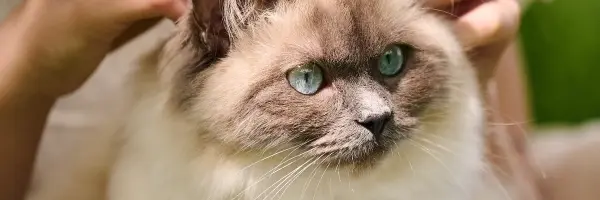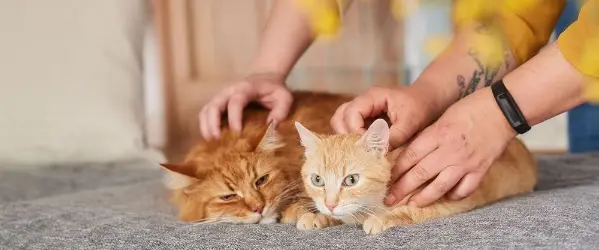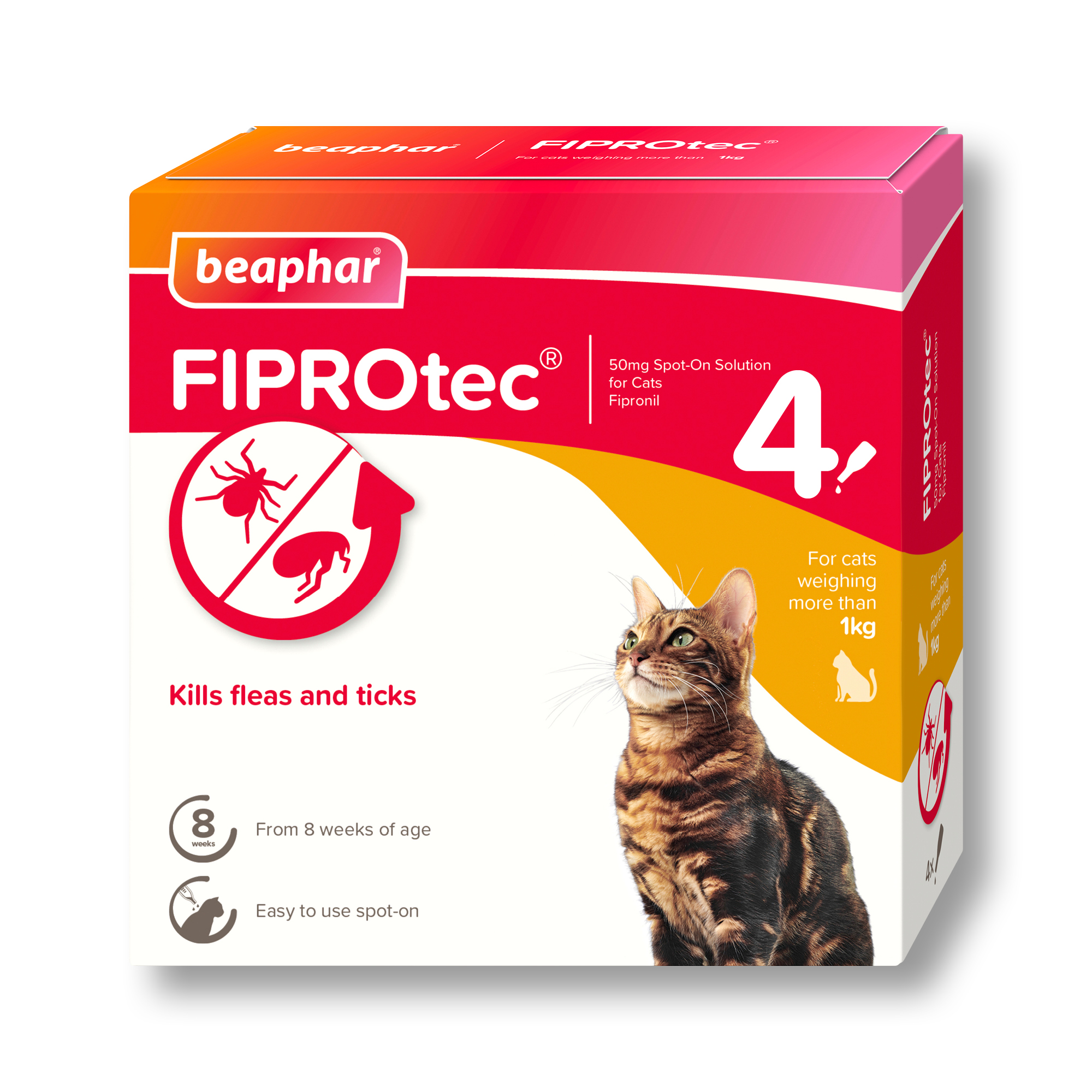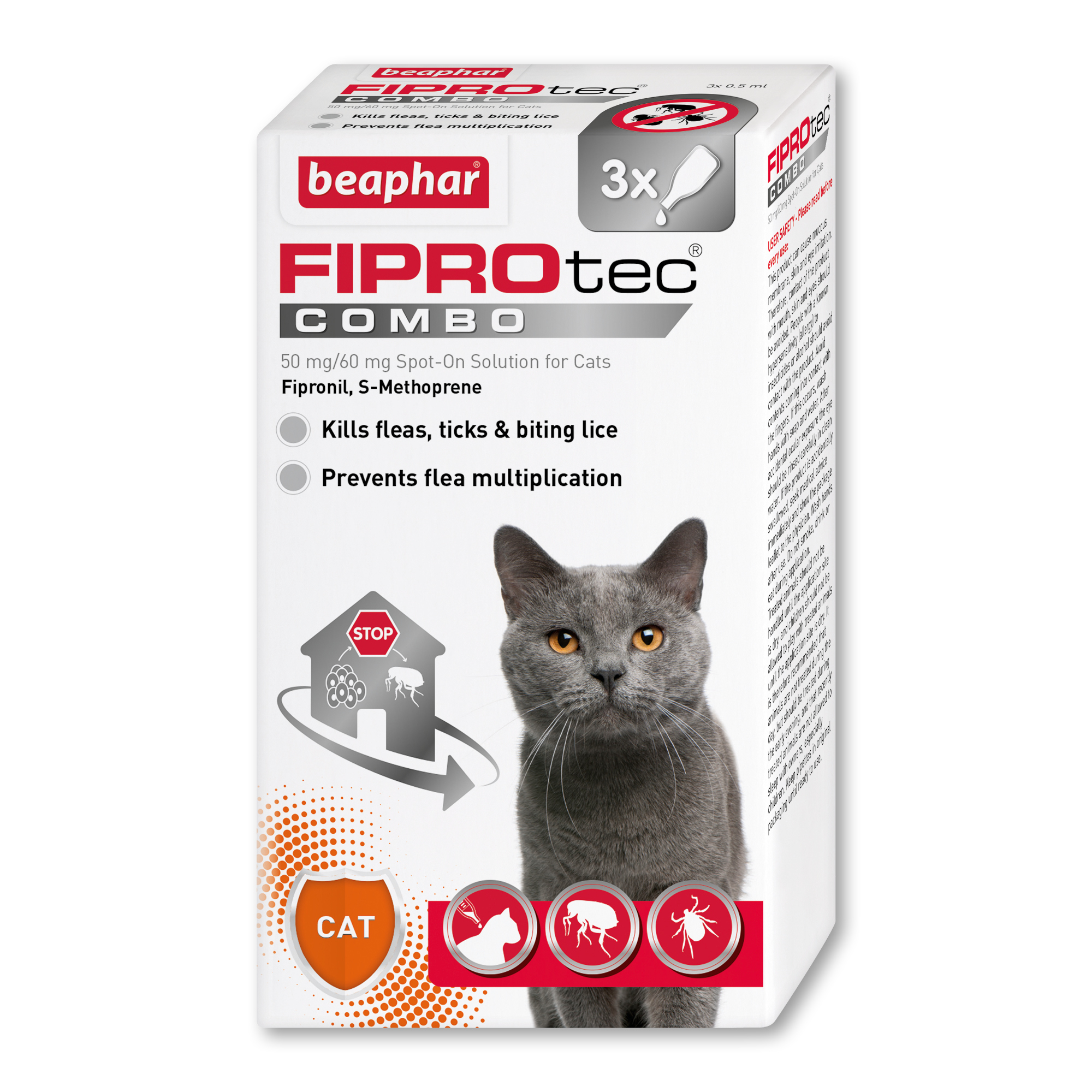How to tell if your cat has fleas
Fleas are unwelcome parasites which affect pets, people and homes. As a cat owner it’s natural to worry about your cat getting fleas, and what to do next. But, don’t panic! We’ve put together this guide explaining how cats get fleas, the signs to look out for and what to do next.
Before we look at the signs and symptoms of fleas, let’s start with how cats get fleas. Knowing this, and how the flea life cycle works makes it easier to avoid an infestation.
How do cats get fleas?
Cats can get fleas from almost anywhere, including:
- Fleas jump on while your cat is outside exploring, and are brought into the home. These are known as ‘hitchhiker fleas’ as they ‘hitch a ride’ on your pet.
- Fleas can jump onto our clothes, and come home with us! Because we’re not their preferred host, they’ll seek out your pet.
- Occasionally adult fleas may jump from one animal to another if they are in close contact.
While it may seem disheartening knowing how easily cats can pick up fleas, there is one important thing to remember. Fleas are easy to avoid if you follow a regular flea treatment routine. If you’ve done this, the above scenarios are unlikely to cause a fleas infestation, as your cat’s flea treatment will kill fleas before they have a chance to multiply.
How to tell if your cat has fleas
The easiest way to tell if your cat has fleas is to look out for following signs the symptoms:
1. Scratching, biting and licking
Fleas cause cats to feel itchy and irritated, which is why scratching is one of the most well-known ways to tell if your cat has fleas. But, remember that all cats scratch, bite or lick themselves as part of the grooming process, so it isn’t always a sign of a flea problem. However, if your cat is scratching excessively, it is more likely they are trying to soothe the itchy feeling caused by fleas.
2. Hair loss and skin problems
If your cat is scratching and biting themselves so much they’re losing hair or breaking the skin, it could be a sign of a serious flea infestation. If this occurs, we recommend speaking to your vet to rule out any medical problems.
Another cause of hair loss and skin problems in cats Flea Allergy Dermatitis (FAD). This is a condition both pets and people can suffer from. During a flea’s blood meal there is a transfer of saliva. If you or your cat are sensitive to flea saliva, the body will react by producing an allergic response. This is seen as a rash which is often painful and itchy.
3. Change in behaviour
Looking out for a change in behaviour is another way to tell if your cat has fleas. As we’ve already said, fleas are itchy and irritating, and will make your cat feel uncomfortable and agitated.
4. Black specks in your cat’s coat or bedding
You can tell if your cat has fleas by looking at their bedding or fur for black specks or ‘flea dirt’. Flea dirt is flea faeces, and contains undigested blood from your cat. It is possible to see flea dirt on a correctly treated pet, so if your cat is up-to-date with their treatment and you’ve protected your home, it’s unlikely to be an infestation. Any hitchhiker fleas that jump onto a correctly treated pet will soon be killed by the flea treatment you’ve been using. But, if you haven’t treated your cat and your home, this flea dirt is almost certainly a sign of a flea infestation, and you will need to take action immediately.
5. Pale gums
A cat with a severe flea infestation may have pale gums, which can be a sign of anaemia. This occurs when the amount of red blood cells being lost is greater than the amount of new red blood cells being produced. Fleas can drink up to 15 times their own weight in blood per day. Flea anaemia is more common in kittens due to their small size and growing body. Adult cats, being larger and fully developed, can cope with losing some blood to fleas. Kittens cannot, meaning flea anaemia can have a severe impact on their health, and in serious cases be fatal.
My cat has fleas, what should I do?
If your cat is showing any of the signs of fleas, it’s best to act quickly, particularly if you haven’t protected them or your home. An adult female flea can lay up to 50 eggs per day, so one flea can quickly turn into hundreds if left untreated.
You can tell for certain if your cat has a serious flea problem by checking them for fleas. We recommend using a simple wet paper test, which we’ve broken down into a simple step-by-step guide.
If the test shows an extensive amount of flea dirt and you haven’t already done so, treat your cat with an on-animal flea treatment that kills fleas, such as Beaphar FIPROtec® Spot-On for Cats. This will kill the adult fleas on your cat.
⚠️Before treating your cat with Beaphar FIPROtec® Spot-On, check the minimum treatment interval of your last flea treatment. You will also need to know the weight and age of your cat. Applying too much product or reapplying too soon could cause an overdose.⚠️
You will also need to treat your home, so you can get rid of the other stages of the flea life cycle living there. Choose a product containing an insecticide and an Insect Growth Regulator (IGR), such as Beaphar FLEAtec Household Flea Spray. The IGR in the spray interrupts the flea life cycle, preventing eggs and larvae from developing, helping you stop a flea infestation more quickly. Plus, Beaphar FLEAtec Household Flea Spray is effective for up to 6 months.
If you have more than one pet, it is important to check and treat all the animals for fleas. Even if one of your pets stays indoors all the time, they could still become infested by fleas picked up by your other pets. The most common flea found in the UK, the cat flea (Ctenocephalides felis) can affect both cats and dogs.
Do I need to flea treat my indoor cat?
Even if your cat stays indoors all or most of the time, they still need flea treating. While there is less chance your indoor cat will come into contact with fleas, it’s still possible.
As we mentioned, people can bring hitchhiker fleas indoors. And as fleas can occasionally jump from one pet to another, if you have another pet who goes outside, they could bring fleas in too. If you haven’t treated your cat and the flea jumps on, you’ll soon find your yourself fighting a flea infestation.
As indoor cats are less likely to come into contact with fleas, you may prefer to use Beaphar FIPROtec® COMBO for Cats. This is a combination flea treatment, meaning it contains two active ingredients. One to kill the adult fleas on your pet, and one interrupts the flea life cycle, affecting flea eggs and flea larvae.
This product is ideal for flea prevention, and may be more convenient if you own an indoor cat where the likelihood of coming into contact with fleas is reduced.
Why is my cat still itching after flea treatment?
While itching and scratching may indicate that your cat still has fleas, it’s not always because of fleas. Your cat may be grooming as normal. Or perhaps they don’t like the feeling of the flea spot-on at the back of their neck and are trying to groom it off, but this should subside.
Like with human medicines, there is a small possibility that your cat has a sensitivity to one of the active ingredients in the flea treatment. If your cat continues to scratch excessively at the site of application or you notice any hair loss or redness, seek veterinary advice immediately and take the product packaging with you.
If this occurs after using a Beaphar flea product, we would also like you to contact our Customer Services Team. We take all reports of suspected adverse reactions very seriously and keep detailed records of anything reported to us so that these can be passed on to the VMD (Veterinary Medicines Directorate; our licencing authority). The VMD ensure that all veterinary medicines continue to be safe and effective. Contact details for our Customer Service Team can be found in our website footer.
Check out Beaphar flea protection for cats
Read more

How to fight a cat or dog flea infestation

Why flea prevention is important for indoor and outdoor cats





